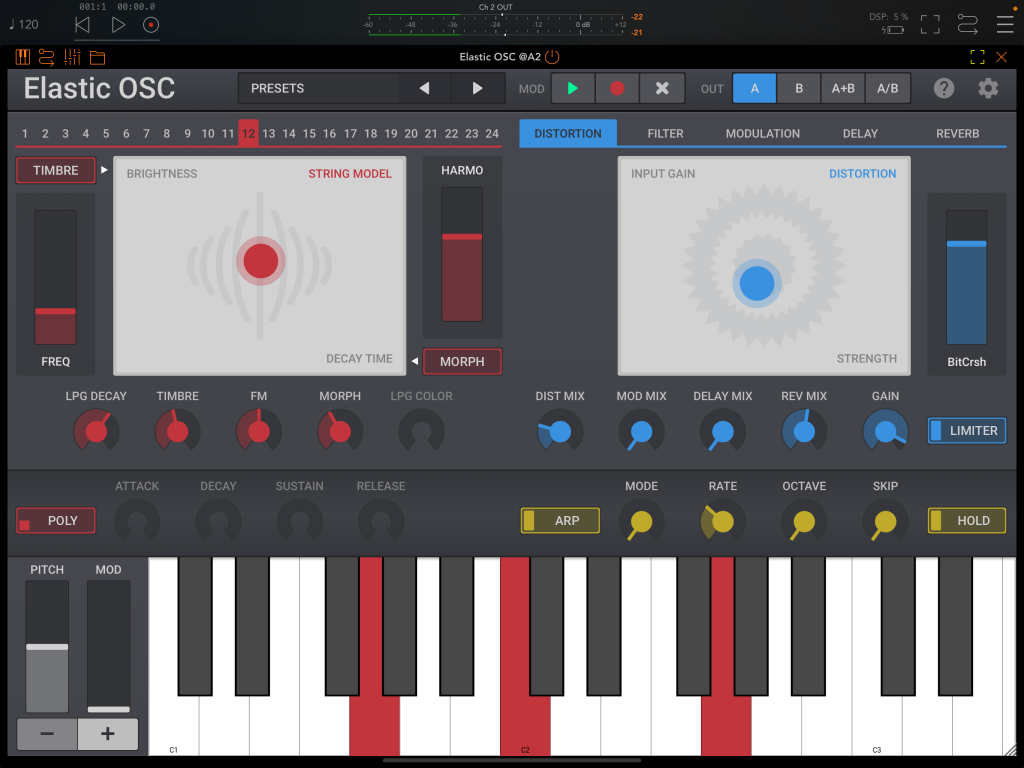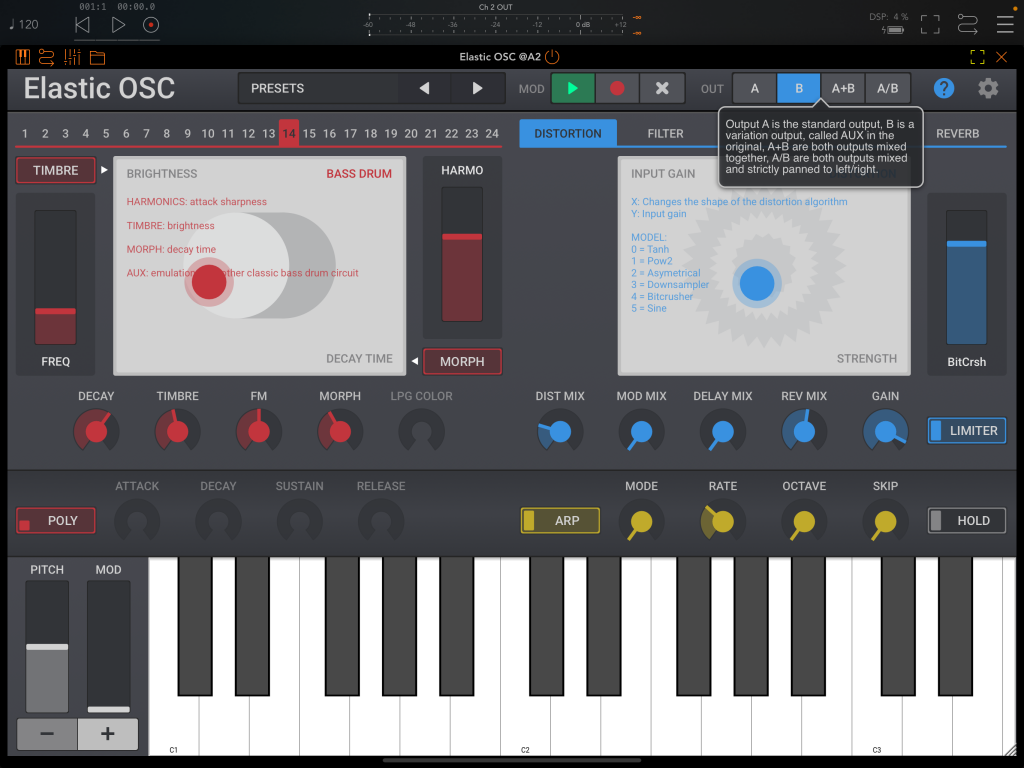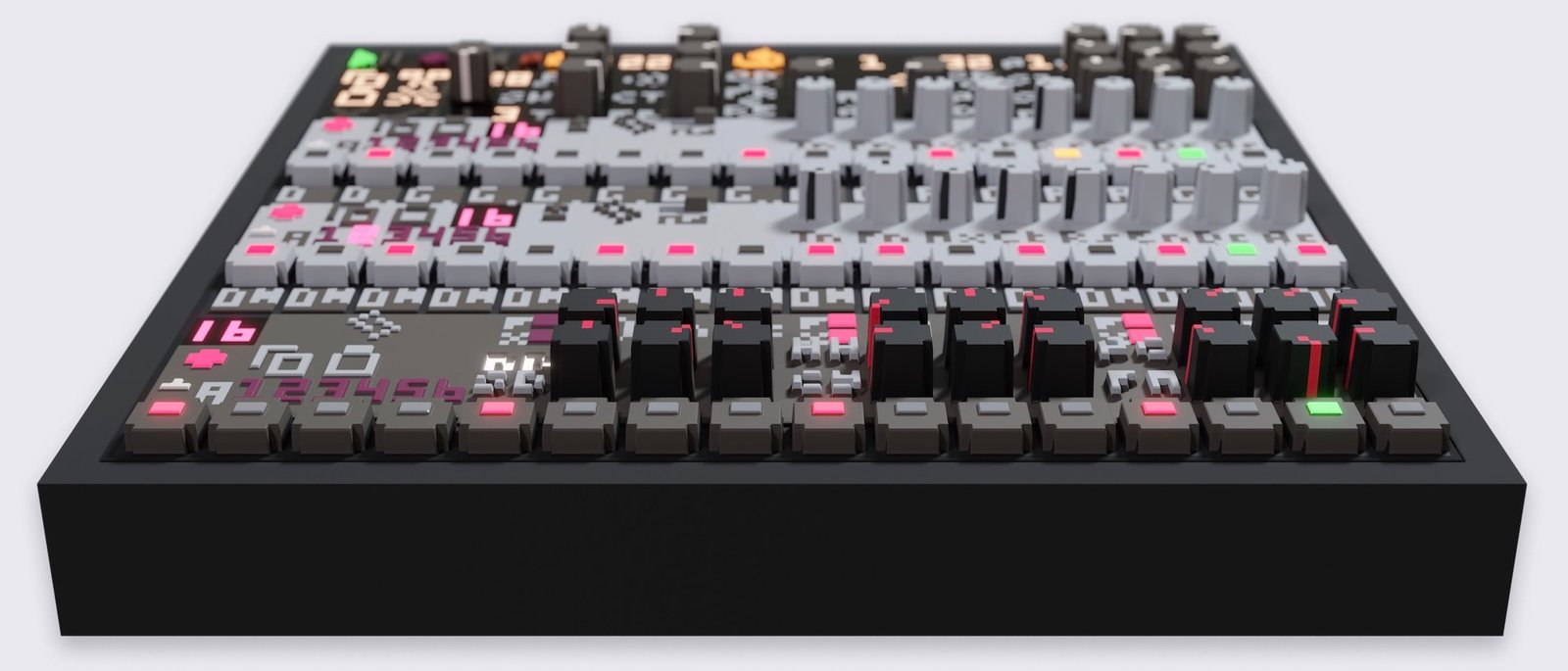Developer Oliver Greschke (MoMinstruments) built an AUv3 iOS synth around the DSP from Emilie Gillet’s legendary open-source Mutable Instruments Plaits VCO. Elastic OSC gives you unique touch-based controls, plus new features that let you use Plaits’ sound palette as a complete mono/polyphonic instrument.
So if you can’t make it to Berlin’s Superbooth this week, you can even get some modular love on your iPhone. (Or really go nuts and, like, play with this on the S-Bahn to FEZ…)
Listen to how it sounds just going through the different modes:
First, credit where it’s due: the heart of this is Mutable Instruments Plaits and its synthesis modes and internal LPG. That DSP code is licensed under an MIT license as are all the STM-based modules. (Later modules were GPLv3.) What Oliver has done is something that was not available before in hardware: a fully playable monosynth/polysynth that lets you jam with those oscillators. (Baptiste Le Goff helped with JUCE porting and other tasks and Gösta Wellmer refined the design. Lucie Gosset added some wonderful distortion modes.)
Projects using this open-source code shouldn’t use the names Mutable Instruments or Plaits; I’m just doing that as a journalist for clarity. I encouraged Oliver to add an explicit disclosure of the MIT license and Emilie’s copyright, and other projects should do the same somewhere in the software as well as in any git repository, etc.
It’s worth taking a quick look at Plaits to grasp what comes from Emilie’s original “macro-oscillator” and what Oliver has added. Plaits was essentially a synth voice in a single 12HP module, thanks to a built-in modulation source and low-pass gate. Different modes let you configure it as a conventional oscillator, percussion source, or various experimental oscillation sources.
Original documentation: Plaits
The first release of Plaits had the 16 modes; the 1.2 update added 8 more. All 24 are reproduced here, accessible by number at the top of the screen:

- Two detuned virtual analog oscillators
- Waveshaping triangle oscillator
- 2-op FM
- Granular formats
- 24-harmonic additive
- Wavetable (with four banks of 8×8 waves)
- Chord generator (using either wavetables or divide-down, vintage organ style)
- Speech synthesis algorithms
- Granular cloud (saw or sine)
- Clocked noise + filter
- Dust/particle noise + filters
- Karplus-Strong string modeling
- Modal resonator
- Two analog kicks
- Two analog snares
- Two analog hi-hats
- Virtual analog VCF
- Phase distortion
- 6-op FM (three variants)
- Wave terrain
- String machine
- Chiptune (really love this one)
Being able to access Plaits’ DSP is nothing new; the DSP code itself is also in the Surge XT project, and you have fully usable versions of the module in VCV Rack and derivatives – the latter more useful if you want the experience of using the panel. There are plenty of modular versions, or you can work directly from the open source hardware repository – After Later is a decent choice if you want one pre-built. Arturia also built some modes into their MicroBrute, though they added some of their own modes alongside. I do recommend trying these out somewhere; Emilie’s creations have become a part of the modern synth lexicon, and they’re an inspiration to anyone working on DSP.
What’s new is getting to use this in iOS as a synth. Even the original outputs are available: A = standard output, B = “AUX”, A+B mixes together, and A/B mixes with hard panning left and right of each.
But wait – what’s that B / “aux” output? It’s a “variant, sidekick, or by-product of the main signal” according to the original documentation. What that means exactly depends on which model is selected, but it means there are even more than the 24 options, and you can even blend the two for hybrid variations.
It’s worth bringing up the help overlay for more details, as pictured below. That’s another reason it’s worth having this extra version of Plaits: I found I learned a couple of tricks that I can apply to the software version I use in VCV Rack.

From there, Elastic OSC adds some other functionality that lets you play around with just this as an instrument. It’s a nice introduction, should you want to get into the Mutable Instruments originals and modular synthesis later.
X/Y pads and modulation recording. The big draw of Elastic OSC is its elegant color-coded X/Y pads. The oscillator section even lets you swap parameters on each axis. You can record and playback modulation with the transport-style buttons at the top.
Playability features. There’s a mono/poly switch that allows you to use Elastic OSC with polyphony – something only possible in hardware with multiple modules. In voice modes, in addition to the original’s Low Pass Gate, you have the option of an ADSR envelope. (The envelope is effectively a VCA at the end of the signal chain, so you’ll need to increase LPG decay first.) The ADSR is disabled for percussion parts.
There’s also a touch keyboard with pitch and mod wheels and an arpeggiator with hold function.
Modulation and processing. The right-hand side of the screen adds more options that are original to Elastic OSC. (Oliver confirms that this is all-new code, not what you may have used before in Elastic FX, etc.) There’s a multi-mode distortion, nicely coded by Lucie Gosset, featuring sine, bitcrusher, dwsp (downsampler), aysmmetrical, pow2, and tanh2 modes. Plus you get a filter, phaser/chorus with feedback (under modulation), synced/free delay with spread, and reverb with time, damping, and spread, and a limiter. They all sound nice enough, and having them integrated here gives you the feeling of a dedicated synth voice module.
Putting it together. Elastic OSC becomes a must on iOS. It’s fun to use as an instrument in your iPad DAW of choice. (Before you use it in Logic Pro for iPad as I did above, be aware there’s a bug that can cause a crash when reopening projects; I passed that along to Oliver and it should be addressed.) It also pairs well with sequencers and hosts, especially on iPhone so your fingers can be freed to tweak synth parameters.
AUM is still my favorite. Let’s go all modular here by adding Elastic OSC to AUM with miRack, a fork of VCV Rack. Yes, yes, miRack also includes a version of Plaits (dubbed “Macro Oscillator”), but … it’s more playable with those X/Y pads. (I hadn’t tried miRack in a while. So – yeah, here’s the thing with open source. I am 100% okay with using miRack and Cardinal and VCV Rack and Surge XT and Elastic OSC and my Micro Brute and… you get the idea. It’s surprisingly convenient moving from one environment to another.)
This one is a fun one. And now you can use it all on the iPad with AirPods Max USB-C with full-quality audio and effectively no latency. More:
Plus more videos:
Gavinski did a bang-up job on this one:
And you can always go back to the source:
https://pichenettes.github.io/mutable-instruments-documentation



